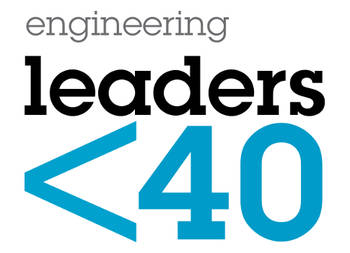Capturing nuisance and process dusts is a major concern for all plant engineers. Nuisance dusts could create operational problems, and are definitely health and safety concerns for the employees.
Capturing nuisance and process dusts is a major concern for all plant engineers. Nuisance dusts could create operational problems, and are definitely health and safety concerns for the employees. Process dusts could shut down the facility if a problem developed.
Some of these dusts are valuable, such as chemicals or precious metals, and recovering and reusing them add an economic benefit to the need for air quality. Compliance with various indoor OSHA requirements and outdoor EPA air pollution regulations brings another important factor into play.
Consequently, proper design, selection, installation, and maintenance of the dust collection system are critical to a plant’s overall success.
Bags and cartridges
There are two basic types of fabric filters — bags and cartridges — to solve indoor/outdoor air quality concerns.
Baghouse collectors use long tubes or bags of fabric media 4-14-ft long to remove contaminants. These collectors incorporate a variety of media types and capture virtually all types of dust, including hygroscopic and fibrous.
They are usually used in temperatures less than 500 F (but can be designed for higher temperatures), and handle extremely heavy dust loading, if the required efficiency is not too high. Baghouses are currently the more popular of the two types, but cartridges are coming on strong.
Cartridge collectors use rigidly pleated elements instead of bags, making it possible to accommodate a larger amount of filter surface area in a comparatively small housing. For example, 100 bags can be replaced with 36 cartridges, which results in a much smaller footprint and height. The initial price may be three times higher, but only 1/3 as many is needed.
Cartridges offer high efficiency and low pressure drop, and are practical when recirculation of clear air downstream of the collector is desired. They are used on dry dusts and applications with high amounts of particles less than 1 micron. Hor- izontal and vertical cartridges can be pulled from the housing for easy maintenance and cleaning.
Cartridges should not be used when loading exceeds 3 gr/cu ft. In addition, they do no lend themselves to high temperature applications, and special media are required above 180 F.
Both bags and cartridges can attain capture efficiencies of 99+%.
Selection considerations
An analysis of the airstream characteristics, dust to be captured, and specific application requirements must be performed before selecting the cleaning system.
Airstream characteristics
Airflow rate, temperature, and humidity are the three primary factors to consider. Airflow rate is used to calculate total filter area based on the air-to-cloth (A/C) ratio, which in turn determines the possible media that can be used. Temperature also impacts the choice of media, maximum media velocity, and materials of construction. Humidity creates potential condensation problems and may agglomerate the particles, making certain media selections mandatory.
In addition, note if there are any corrosive gases, explosive vapors, condensable vapors (other than water), and toxicity.
Particulate characteristics
Inlet loading, particle size distribution, and particle shape are the major items to evaluate. Two dusts similar in shape and size, but not the same density, may require completely different collectors and A/C ratios.
Inlet loading is usually measured at the collector’s inlet and expressed in gr/cu ft (7000 gr = 1 lb). Typical loading from most dusts is 2-10 gr/cu ft. The A/C ratio must be adjusted based on the dust loading. If more than 10 gr/cu ft is encountered, a precleaner is usually advisable.
The smaller the particle size (expressed in microns), the more efficient the collector must be. Sizes of the same particle type can vary from 1-700 microns.
Material all the same size is the most difficult to filter because it creates a dense mass that is hard for air to pass through. Particles too fine for the filter selected could bleed through and exit the collector, creating air pollution problems.
Particle shape also affects media selection. Spherical particles are easy to collect, but fibrous dusts adhere to each other and may require a coated media to counteract the stickiness. Hygroscopic and electrostatically charged dusts create similar problems. Media must match these factors.
In addition, dust might be abrasive, explosive, corrosive, carcinogenic, hazardous, or chemically reactive.
Application factors
The application also brings several considerations into the dust collector decision.
EPA, OSHA, and the insurance carrier might have requirements for the allowable emissions from the plant, or level and quality of any recirculated air. Required efficiency dictated by the company also enters the equipment selection process.
Available utilities, including compressed air, electrical power, and water, must be analyzed. Also determine how the dust is to be disposed of, and whether there are any noise requirements to consider.
The equipment can be located inside or outdoors, with housing size a big factor to consider. If outside, insulation or heating coils may be required to prevent condensation. The inlet/outlet can be above or below the filter section. Type of fans, height of equipment, and safety related items are other important factors.
Equipment options
Dust collection systems are classified according to their air cleaning mechanism. Three types are available: shakers, reverse air, and pulse jet. All three do an effective job of cleaning, if they are properly selected, installed, and maintained. Theoretically, all three types are capable of handling most applications, but circumstances and capabilities usually find one doing the best job.
Shakers
This approach is the oldest cleaning style used, but it is only a small portion of today’s new purchase market. The dirty gas inlet is located at or below the bottom of the bags. Entry near the hopper is normally used because it is structurally simpler and the size of the hopper helps evenly distribute high-velocity inlet gases, resulting in lower speeds at the entry point, which minimizes bag damage. Inlet air moving up to 3500 fpm must be slowed to 350 fpm via angled baffle plates and side venting air before hitting the filters.
Filter bags hang vertically in rows, with the top sewn shut with a strap or closed off with a cap. Bags are attached to a shaking mechanism across the length of the collector. Bottom of the bags is open and attached to a cellplate. Particulate collects on the inside of the bags.
To perform the off-line cleaning, a damper closes the dirty gas inlet. Most shakers have more than one compartment so the unit does not have to shutdown completely for cleaning. (Dirty gas is then distributed to the one or more remaining compartments.) If the compartment is not completely isolated, bags do not clean completely and dust is re-entrained.
The shaker mechanism is usually outside the collector, which allows for repair and maintenance without interfering with the airflow, but some are placed inside. The motor-driven shaker bar is connected to lever arms, which are tied to the bag support tube or beam. Shaking the tube creates a sine wave that begins at the top of the bag and ripples down the length. A portion of the dustcake formed on the inside of the bag is changed in shape as the fabric collapses and is released into the hopper.
If the filters are under tensioned, the shaker mechanism does not generate enough movement to shake the filter from top to bottom, leaving excess particulate in the filters. If over tensioned, the shaker motion is restricted, preventing proper dust removal.
The optimal shaking speed and frequency depend on the diameter and length of the bag. Pressure drop across the baghouse determines the interval of the shake. Automatic controls based on differential pressure gauge readings regulate the operation.
Shakers have high initial and operating costs and more moving parts, which leads to increased maintenance. Units up to 25-ft tall are required to maintain filtration efficiency during off-line cleaning.
Reverse air
This type includes several compartments in a single housing. Dust-laden air usually enters near the hopper and passes through a baffle that protects the filters from abrasion and distributes the particulate more evenly through the collector.
Reverse air equipment, which is often chosen when super fine material is handled, uses bags 10-40-ft long and 5-12 in. in diameter. This approach is considered the gentlest cleaning method, which leads to longer bag life. Rings sewn around the circumference prevent them from collapsing during the cleaning cycle. The number of required rings is determined by the filter length. A support rack holds the top of the filter, while the bottom connects to a cell plate.
Dirty air enters the inside of the filter bags, and clean air exits through the other side. Cleaning is accomplished with high-pressure air by isolating one compartment (while all others continue to operate) by closing an inlet or outlet damper. The damper choice is determined by whether the system is positive pressure (fan capable of handling dust-laden gas located upstream of collector and pushes air) or the more popular negative pressure (fan on clean side and pulls air into collector). Usually, negative pressure units close the outlet damper, and positive pressure close the inlet.
On a negative pressure system, reverse air is forced through the filter by pressurizing the clean airside of the compartment. The reverse air damper is on the clean side of the collector.
On a positive pressure system, the inlet damper is closed and reverse air is sucked down through the filter by creating a negative pressure in the hopper. This action pulls the cleaning gases down through the filter.
Pulse jet
This version is considered the most aggressive and most effective cleaning approach. It is the only one of the three types that cleans online while dust is still entering the compartment.
Dirty air usually comes in through the hopper, turns with the aid of a baffle, and enters the housing. (Large particles fall immediately into the hopper.) Dirty air floods the baghouse, while clean air exists through the filters. Some designs have the dirty air entering through the upper portion of the bag plenum.
Bags are constructed using many cylindrical filters supported by a wire cage that hangs vertically in the collector. Fabric filters serve as a support structure for the dustcake that forms on the outside of the bags during the filtering process. The dustcake acts as the primary filter for the collection of particulate. (Some laminated media do not require a dustcake to achieve high efficiencies.)
Periodically, the media must have some of the dust removed to maintain operating efficiency. The cleaning frequency is adjusted to maintain the proper differential pressure across the filters.
When this differential pressure point is reached, a high-pressure jet of clean, dry compressed air is directed inside the filter through a venturi device or eductor. The process requires 1 cfm of compressed air/1000 cfm moving through the dust collector.
The ontime for the pulse of air is usually 0.1-0.15 sec; frequency of pulses varies from 1-30 sec. If the pulse blast is too long, cleaning is inefficient. If too much pulsing is employed, bag life is reduced. Rows being cleaned should be staggered to minimize re-entrainment.
The blast of air creates a shock wave that causes the filter to momentarily flex. As the shock wave travels down the filter from the top, the dustcake is fractured and a portion falls into the hopper. The remainder is redistributed onto the filter. In essence, dust jumps on and off the filter from top to bottom before reaching the hopper.
A reverse pulse has lower initial cost (higher A/C operation) than a shaker because it does not require oversizing due to offline cleaning. Energy costs are lower, filters are more easily changed, and less maintenance is needed. — Ron Holzhauer, Managing Editor, 630-320-7139, [email protected]
Plant Engineering magazine would like to thank AAF Intl. and BHA Group, Inc., for their special contributions to the development of this article. The cover photo was provided by Hosokawa MikroPul.
Key component
The filter element is the most important component of the air cleaning system. If the media do not match the job parameters, the collector cannot perform properly regardless how well the rest of the system is operating.
Selection of the material type depends on cost, plus a variety of dust characteristics, including temperature, abrasion, process consideration, gas chemistry, and moisture level.
Media are available in several woven and nonwoven fibers, including synthetics and fiber glass. The fibers handle different operating temperatures, with various degrees of resistance to moisture, acids, and abrasion.
Nonwoven fabrics are the more common, with polyester being the most versatile material. They serve operating temperatures below 275 F (most applications fall under this figure; higher temperatures require more specialized materials). Woven or felted fiber glass handles operating temperatures up to 500 F.
Smooth, singed, glazed, eggshell calendared, dipped, and coated finishes are applied to certain types of media to improve their operating performance.
Consult the manufacturer’s literature for the specifics related to fabrics and finishes.
More info
A previously published two-part series presented additional information on this subject: “Selecting Baghouse Dust Collectors (PE, October 1996, p 58, File 7550; and PE, April 1997, p 100, File 7550).
CD-ROM on “Dust Collector Fundamentals” can be purchased from BHA Group, Inc., by calling 800-821-2222 or visiting their web site at www.bhagroup.com.
Fabric filter manufacturers
The following companies provided input for this article by responding to a written request from Plant Engineering magazine. For more information about their product lines, circle the indicated reader service numbers on the post card in this issue, or check out their web sites.
&READERSERVICE> Company Web site Circle
AAF Intl. www.aafintl.com 221
Advanced Environmental Systems www.aesinc.com 222
Aget Manufacturing — 223
Airecon Manufacturing www.airecon.com 224
Airguard www.airguard.com 225
AiroTech Environmental home1.gte.net/airotech 226
Aceco Environmental — 227
BHA Group www.bhagroup.com 228
Champion Laboratories www.champlabs.com 229
Croll-Reynolds Clean Air Technologies www.croll.com 230
DISA — 231
Dustvent — 232
Farr www.farrco.com/dust 233
Fisher-Klosterman fkinc.com 234
Griffin Environmental griffinenviro.com 235
Hosokawa MikroPul hosokawamicron.com 236
Jet Airtechnologies www.c4systm.com/jetwheel 237
Marsulex Environmental Technologies www.met.marsulex.com 238
McGill AirClean www.unitedmcgillcorp.com 239
Monroe Environmental — 240
Murphy-Rodgers — 241
Pneumafil — 242
Scientific Dust Collectors — 243
Seneca Environmental Products senecaenvironmental.com 244
Sly slyinc.com 245
Steelcraft steelcraftcorp.com 246
Sternvent www.sternvent.com 247
Torit Products www.torit.com 248
Uni-Wash/Polaris Industrial Ventilation www.unipol.com 249
United Air Specialists www.uasinc.com 250
Wheelabrator Air Pollution Control www.wapc.com 251&/READERSERVICE>
Key concepts
Bags and cartridge collectors handle the filtering job.
Shaker, reverse air, and pulse jet cleaning mechanisms are used with these collecting approaches.
Application parameters, dust characteristics, and economics determine which type of equipment is most appropriate.



